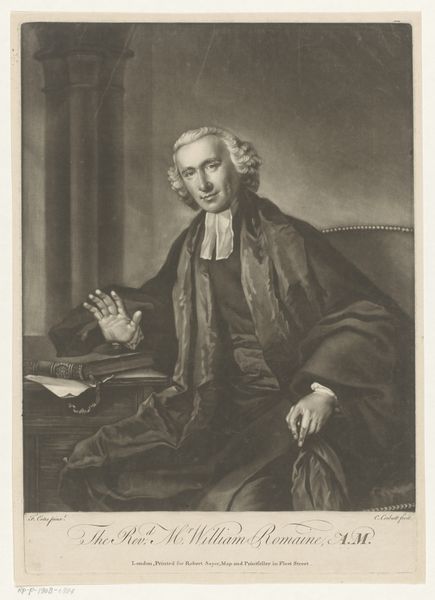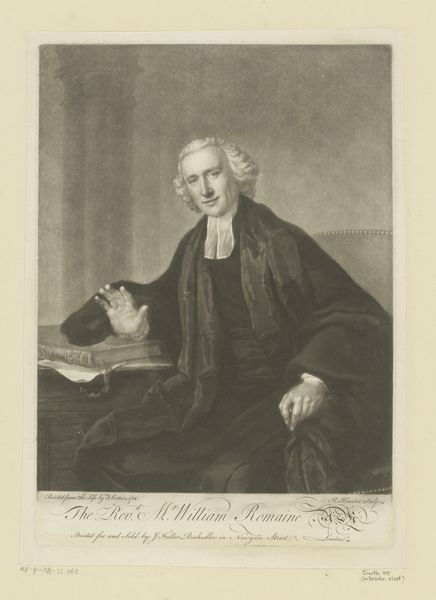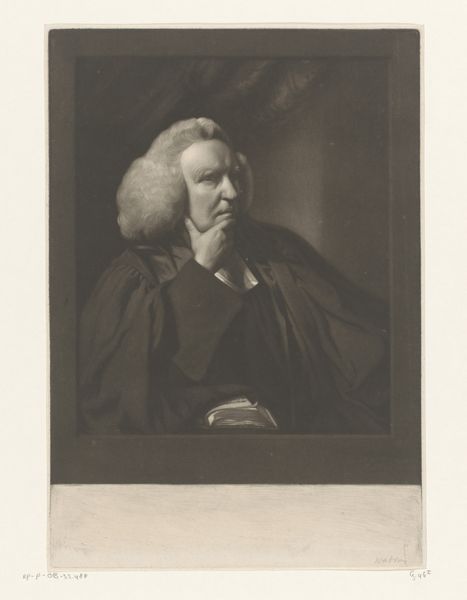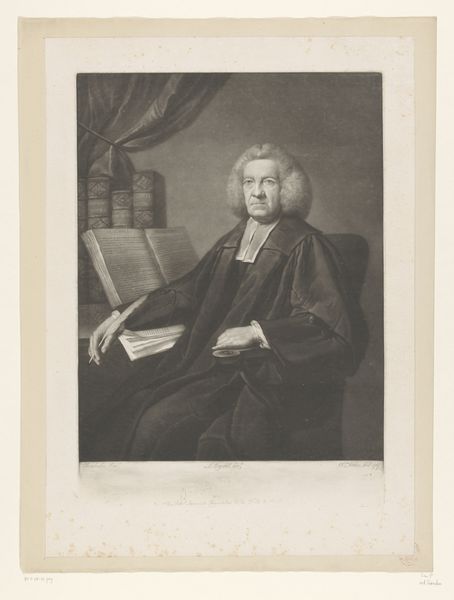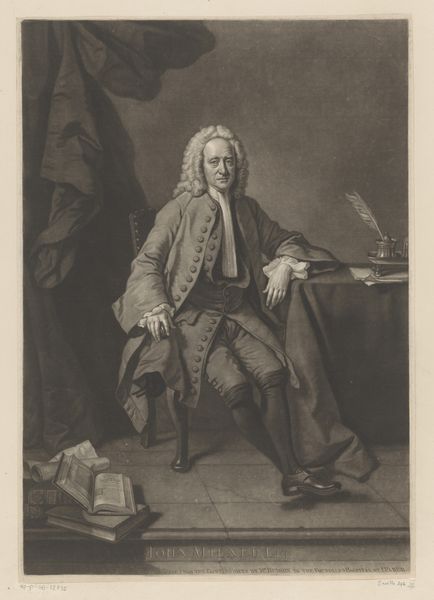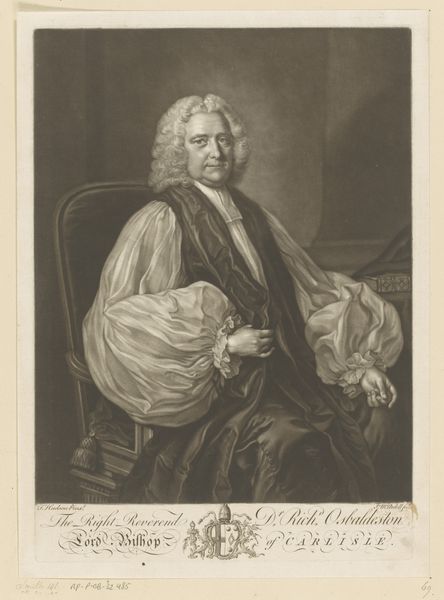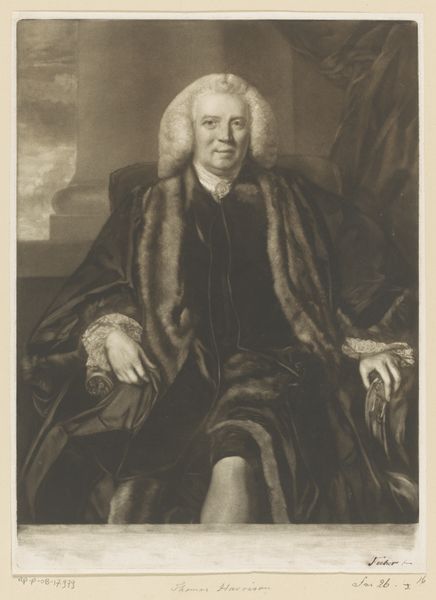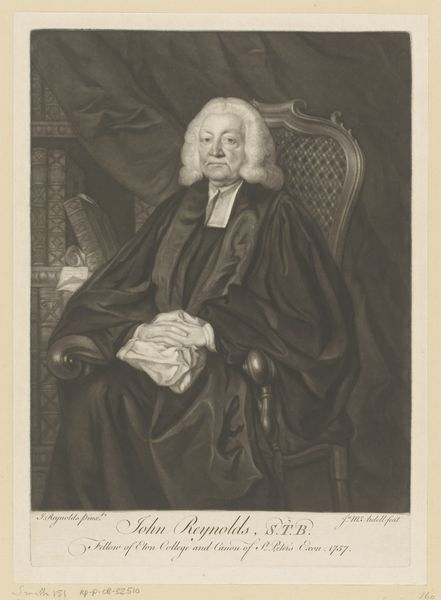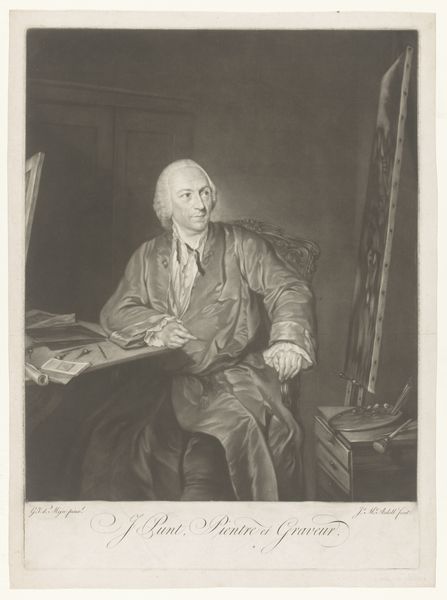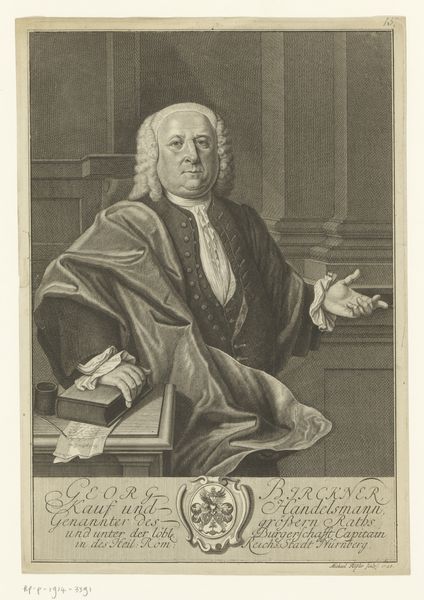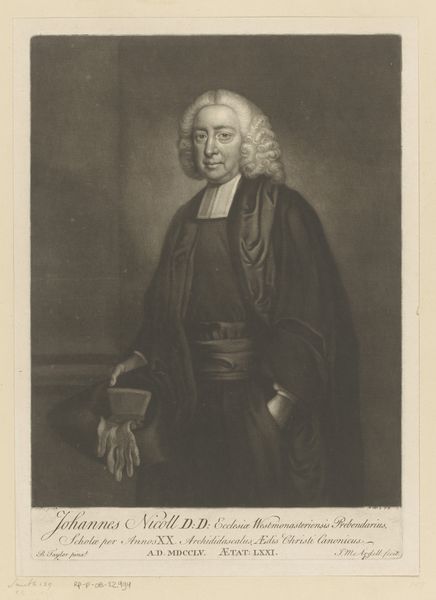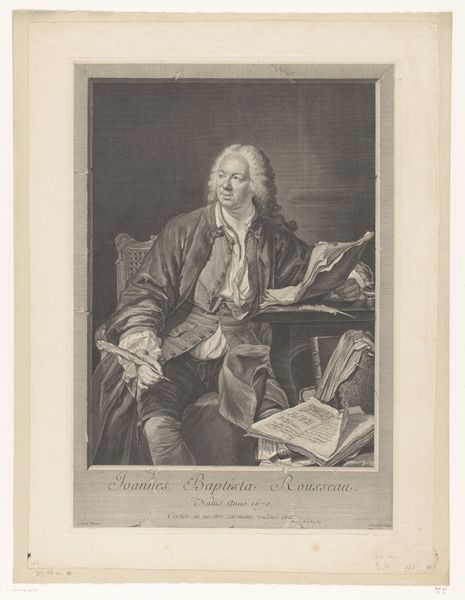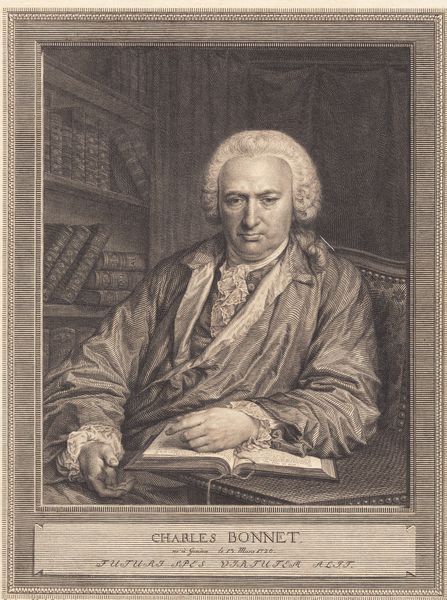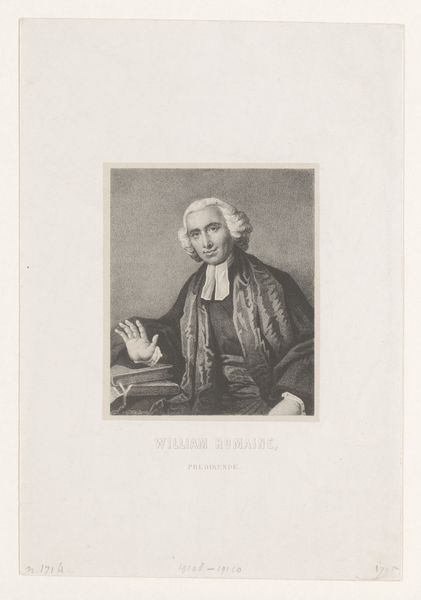
Dimensions: height 378 mm, width 276 mm
Copyright: Rijks Museum: Open Domain
Editor: So, this is "Portrait of Laurence Sterne" from around 1760-1762, an engraving by Edward Fisher after Joshua Reynolds. There's a pensive mood, maybe a touch of melancholy about it. What do you see in this piece, especially considering its historical context? Curator: Immediately, I’m drawn to how this portrait negotiates power and intellectualism in the 18th century. Think about Sterne himself, a celebrated author but also a clergyman. How does Fisher, through Reynolds' original, use visual cues to portray both his intellectual authority and perhaps, a subtle critique of societal norms? The gaze, for example – does it challenge or conform? Editor: It feels like a challenge. His gaze is direct, almost confrontational, but then there's the softness in the rendering of his face, and the pose is quite relaxed, which tempers the challenge. Curator: Precisely. Consider also the print medium itself. Engravings allowed for wider distribution, democratizing access to imagery. How does this reproduction of Reynolds’ original contribute to Sterne’s persona, and more broadly, the cult of celebrity that was emerging? Are we seeing the construction of a public intellectual, accessible and yet elevated? Editor: So, it's not just about depicting him but about creating a particular image for a broader audience? The choice of making it reproducible through print serves a specific social function. Curator: Exactly. And let’s not forget the overt class implications inherent in his posture, in his clothes... How might that affect a viewer from his era? Think, class, privilege, access...all part of the message. Editor: That adds so much to it. I was just seeing a portrait but now I see a carefully constructed persona meant for public consumption and a reflection on class dynamics in that period. Thanks! Curator: And it encourages us to look critically at how such power dynamics continue to be portrayed and perpetuated, even today. A print becomes a mirror to society, then and now.
Comments
No comments
Be the first to comment and join the conversation on the ultimate creative platform.
